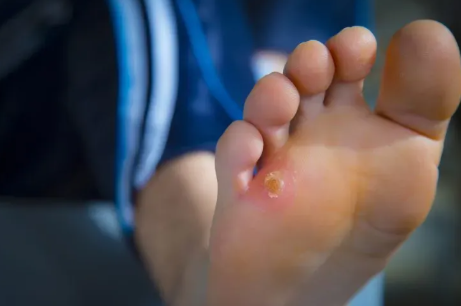How to Tell If Your Foot Wound Needs Medical Attention
A small cut on your foot might seem harmless at first, but not all minor wounds are as simple as they look. While many heal with basic care, others can lead to infection or complications if ignored. Knowing when to seek medical attention can help prevent long-term issues.
Signs of a Problematic Foot Wound
It’s easy to brush off a sore foot, especially after a long day. But some wounds need proper foot wound care. If your injury is deep, keeps bleeding, or is caused by something dirty or rusty, it should be checked. Redness that spreads, swelling, or pain that worsens instead of improving are early warning signs.
These may point to an infection or delayed healing. You may also notice warmth around the wound or a bad smell. These are strong indicators that it’s time to get help. Early treatment can make a major difference in how quickly and safely you recover.
When Home Care Isn’t Enough
Proper foot wound care begins with cleaning and protecting the area. But even the best first-aid routine won’t help if the wound refuses to close or continues to ooze. If you’re diabetic or have poor circulation, be especially cautious. Even small injuries can become serious without much warning.
Another sign to watch for is fever. If you feel unusually tired or develop a temperature after injuring your foot, your body could be fighting an infection. Delaying treatment in such cases can lead to complications like cellulitis or even sepsis.
Common Foot Wound Risks
Some wounds are more likely to get infected than others. Puncture wounds from nails, glass, or sharp objects pose a higher risk. These can trap bacteria deep under the skin. Animal bites or cuts near joints can also cause problems. If the wound is near the ankle or between the toes, it may be harder to keep clean and dry.
Moisture and friction in these areas can make healing more difficult. Foot ulcers are another serious concern, especially for people with diabetes. These open sores may not hurt at first, but they can become dangerous over time.
Important Symptoms You Shouldn’t Ignore
There are several red flags that should prompt an immediate visit to a healthcare provider. A change in skin color, especially turning blue, black, or grey, can mean tissue damage. Timely treatment is crucial in this case. A foot wound that starts to produce pus or gets bigger rather than smaller is another cause for concern.
If you can’t move your toes or feel numbness around the wound, that’s also not normal. Persistent pain or wounds that don’t improve in a few days should be evaluated. Sometimes infections go deep, beyond what you can see on the surface.
Essential Foot Care Guidelines
Keeping your feet clean and protected is the first step to avoiding trouble. Always wear shoes in public areas and check your feet regularly if you have any chronic conditions. Trim your toenails carefully and wear socks that allow your skin to breathe. Avoid tight footwear that rubs against the same spot over and over. Simple habits can prevent injuries before they start. If you get a cut, clean it with mild soap and water. You can use any antibiotic ointment and cover the wound with a sterile bandage. Monitor it daily for signs of healing.
A foot injury might not seem serious at first, but ignoring the signs of infection can lead to bigger problems. Pain that worsens, swelling that spreads, or a wound that won’t heal shouldn’t be taken lightly. With the right approach to foot wound care, most injuries can heal without complications. Trust your instincts and seek medical intervention when something doesn’t feel right. Your feet carry you every day; they deserve your attention when they’re hurt.
